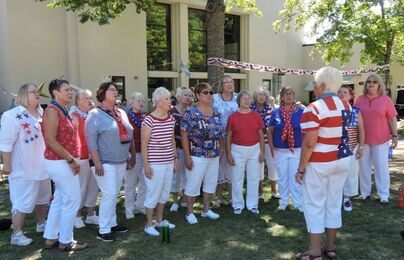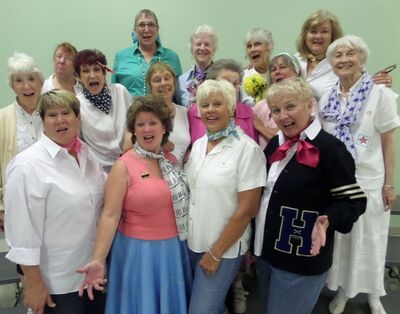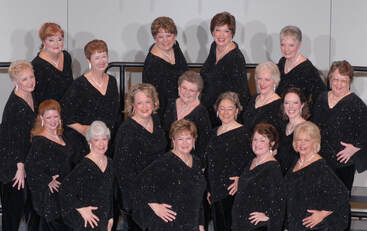HARMONY
|
WHAT'S SPECIAL ABOUT BARBERSHOP CHORDS
Dave Stevens (arranger of San Fancisco Bay Blues) gave this fantastic class years go about hearing, feeling, and singing barbershop harmony. Using familiar old songs, he teaches us how one chord "needs" to move to the next chord and eventually a song ends most often back at "DO" or "One". HISTORY of BARBERSHOP
Barbeshop Harmony Society (BHS): Here's a link to a webpage with a series of classes taught by David Wright several years ago during the weeklong school that the men's group holds every summer (live or online. https://www.barbershop.org/about/history-of-barbershop/roots-of-barbershop-harmony SWEET ADELINES HISTORY Sweet Adelines was a natural spin-off of the men forming a barbershop organization in the US .... here's a link to a new online e-book for Sweet Adelines 75th Anniversary history that was finished last year: https://issuu.com/thepitchpipemagazine/docs/75th_anniversary_book_jubilee_issuu |
In the past, singing was a popular form of fun and entertainment. Families and friends would gather around to sing and/or play instruments together and make up harmonies as the melody suggested. Communities would have sing-out nights where everyone would come to sing and perform for each other, and family groups would travel from town to town to perform. People seemed to just naturally make up their own harmonies around a lovely melody, This "making of harmony" was called "woodshedding."
Times have changed and we now listen to music on our phones and ipads, huge concerts replace the small town performances, and singing is done in the car or shower. It's a time that we now listen to music - rather than make our own. Sadly, we have become consumers of harmony, rather than being harmony creators. We found this great YouTube clip of Paul Olguin (who has performed on our shows) giving a class at Harmony University in Nashville, TN. He's talking about relearning how to become our own harmony creators. We think you will enjoy watching his class. |





